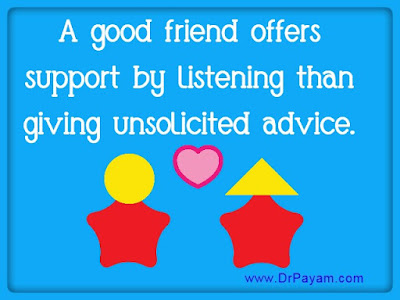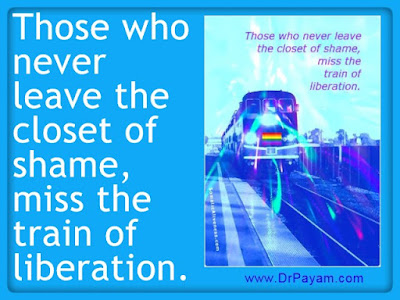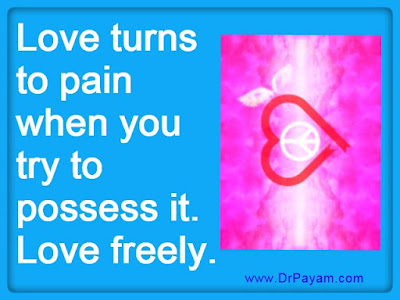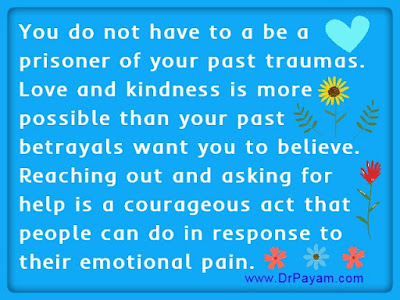For many LGBTQ (lesbian, gay, bisexual, transgender, queer/questioning)
people growing up was distressing due
to homophobia and transphobia. Schools felt like a scary place for those
who were scapegoated as queer. LGBTQ people
of color reported even worse experiences due to the additional stress of racism
and racial bullying. Many
of the gay men’s personal narratives that I have heard are not vastly different
from my own. Regardless of national origin or skin color, we are part of a
tribe with similar stories of growing up in a homophobic and transphobic world
where our true essence was repeatedly assaulted. As LGBTQ people, we
have connected around the theme of “love is stronger than hate” which raised awareness
about our injustice and suffering. Addressing these issues have helped
people to become more concerned about the mistreatment of not only LGBTQ kids,
but also any youngsters who do not flow with the mainstream. More work needs to
be done to make the world a safer place for marginalized people. Anyone dealing
with oppression does not deserve to suffer in silence and needs encouragement
to reach out and get support. Love and healing
is more accessible than our painful moments want us to believe.
Injustice and trauma that were inflicted on LGBTQ people as
result of growing up in an oppressive environment deserve empathy and healing. When
it comes to healing, psychotherapy offers a variety of approaches to work with trauma,
including the ordeal of growing up gay in a heterosexist world. Many mental
health professionals who work with LGBTQ clients often rely on a “top-down”
approach, which focuses on the highest
form of cognition that involves changing thoughts. Moreover, it challenges
clients’ negative belief systems and their cognitive distortions. Many clients
have benefited from cognitive restructuring in psychotherapy and developed
skills in identifying and disputing irrational or maladaptive thoughts. In my
clinical experience, when it comes to healing from years of assault on one’s
core identity including feelings of shame and humiliation for same sex
attraction, a cognitive approach is neither enough nor always possible. For many
queer trauma survivors whose thinking brain gets hijacked by trauma memories and their bodies default to a fight-flight-freeze
response, a body-centered approach or bottom-up processing is necessary to calm
their arousal systems. Relying on the thinking brain as the only path to deal
with the root cause of trauma symptoms is not effective. The brain parts that are
responsible for reflexes, memories, and automatic survival responses are in the
deeper regions of the brain, and trauma informed therapy needs to begin by
focusing on those areas.
Educating clients about a bottom-up approach, and the basic
working of the nervous system can help enhance and clarify the somatic focused
therapy process. For many LGBTQ clients, trusting a
professional or an authority figure might not be easy due to their history with
a discriminatory health care system, religious bigotry, police violence, school
trauma, and family betrayal. Establishing a therapeutic alliance with LGBTQ
clients can be facilitated by explaining the therapeutic process including the key
role the nervous system can play in trauma recovery and asking their permission
to provide somatic-focused therapy.
Our body comes with an already built-in autonomic nervous
system (ANS) that provides many vital functions. The ANS is the part of
the nervous system that governs the fight, flight, or freeze instinct and is responsible for the
unconscious bodily functions like breathing, digesting food, and regulating the
heart rate. It also plays an important role of supplying information from our
organs to our brain. The ANS is central to our experience of safety, connection
with others, and our ability to bounce back from life’s overwhelming
experiences. Relying on neuroception, a term coined by Dr. Porges, our ANS is
able differentiate between safety, danger, and a life threat. Neuroception, as
Deb Dana (author of The Polyvagal
Theory in Therapy) explains, is automatic, and it does not go through the thinking
part of our brain. Everything from sound to smell to temperature in our
environment, people’s tone of voice, and eye contact can influence our neuroception.
It is like a “guardian angel” that helps us take
immediate action in the face of danger or threat. The goal of neuroception is
to keep us safe and alive.
Pat Ogden’s, Stephen Porges’, Bessel van der Kolk’s, and
Peter Levine’s research and writings have expanded my understanding of the
autonomic nervous system as a relational system that has been shaped by
experience. We now know previous negative experiences and traumas can
significantly affect how our nervous system accurately assesses safety, danger,
or a life threat. This can explain why many LGBTQ people with history of being
judged, humiliated, and violated often suffer from anxiety that stems from
faulty neuroception.
Neuroceptive conditioning based on previous homophobic and
transphobic mistreatment can cause many LGBTQ people to feel unsafe even where
there is no real threat. What we hold inside in the aftermath of trauma can cause
us to over-react in a safe environment or not react correctly in a dangerous
situation. A body inclusive therapy can help to support the ANS to move out of
a dysregulated state into a biological state of safety and connection.
There are many body-oriented methods for trauma healing
including Somatic Experiencing (SE) which was founded by Peter A. Levine, Ph.D.
His curiosity about animals in the wild getting exposed to life-threating
situations without getting PTSD while humans frequently succumb to the disorder
was the start of SE’s development. SE is
a body first approach that helps people discover where they are stuck in the
fight, flight, or freeze responses, and how they can “resolve these fixated
physiological states.” SE is a powerful trauma healing medium that includes
working with sensations, movements, postures, and gestures as a way of
deepening resilience and to reset the nervous system. According to Dr. Levine,
the ANS can become dysregulated due to “the thwarted responses of fight,
flight, or freeze” in the aftermath of trauma. A body-oriented approach like SE
can help stop trauma to become “a life sentence” through “gently releasing thwarted survival
energy bound in the body.” To do this, Dr. Levine developed SIBAM as a method
to accurately track a client’s inner experience. In his writing, he described SIBAM
as an acronym for: “Sensation (Internal-Interoceptive), Image, Behavior (both
voluntary and involuntary), Affect (feelings and emotions) and Meaning
(including old/traumatic beliefs and new perceptions). These five elements are
the channels of experience that occur during a session.”
LGBTQ people who grow up with mistreatment can discover the
tales of their abuse written in their nervous system. The queer body remembers
the experience of growing up in a world with cruelty. Having over two decades
of providing LGBTQ affirmative psychotherapy along with research and numerous
trainings on body-mind therapy, I have learned cruelty and cumulative stress of
mistreatment can become embodied during a person's life and affect the working
of the ANS. For example, one gay high school student with symptoms of anxiety disclosed
to me that he hears several homophobic remarks a day along with experiencing bullying
and harassment. Such ongoing
stress from homophobia can activate his sympathetic system (“stress response”
or “fight or flight” response). Naturally as a target of hate and mistreatment,
he wants to defend himself or escape the abusive situation. Often due to lack
of protection for many LGBTQ youngsters, during such abusive situations neither
fighting nor fleeing can resolve the overwhelming situation. As a result, the energy that gets locked inside him for not
being able to fight or flee causes trauma symptoms. In other words, the
thwarted or incomplete fight and flight responses can become “trapped” within
the youngster’s body and dysregulate his nervous system. Such a
dysregulated nervous system is likely to get stuck on “high” or hyper-arousal.
Anxiety, panic attacks, rage, hyperactivity, mania, hypervigilance, sleeplessness,
exaggerated startle response, digestive problems, and many other symptoms are
the result of a dysregulated nervous system that is stuck on “high” or
hyper-arousal.
On the other hand, there are those of us whose nervous
systems can stuck on “low” or hypo-arousal, which can result from being
terrorized growing up with no hope of protection or escape. For example, faced
with isolation, confusion, bullying, physical attacks, and ongoing lack of
safety is too stressful for any child to endure, especially when there is no
empathic other to help the kid. Such experience is often beyond the youngster’s
“window of tolerance” (a term coined by Dr. Daniel Siegel). This is when the
dorsal vagal (dorsal branch of the vagus nerve as discussed by Dr. Porges’ Polyvagal
Theory) can shut down the entire system, and the mistreated youngster can go
into freeze. In other words, the child suffers in silence with numbness or
dissociation as his only available survival mechanism. Dorsal vagal is
instrumental in activating the “shutdown” of the body in cases of overwhelming
fear which can result from trauma. This automatic survival mechanism can become
a long-standing pattern of how individuals might cope with fear and stress in
life. For instance, people whose nervous system is stuck on “low” or
hypo-arousal when faced with life stresses can default to shutting down,
disassociation, chronic isolation, detachment, numbness, and suicidal thoughts.
As
stated, trauma symptoms are the trapped energy from the "incomplete defensive
response" (fight, flight, or freeze) and healing involves helping the body
to release such thwarted responses. Working with many members of LGBTQ
community, I have noticed when the nervous system gets stuck on
freeze, when numbness and detachment become a gay man’s dominant state, he is
more likely to engage in risky behaviors as a temporary relief from inner deadness.
Thrill seeking behaviors
such as, excessive gambling, hypersexuality, and crystal meth (crystal
methamphetamine) use are few examples of how some gay men escape the emotional flatness
that results from experiencing the hypo-arousal state. The same behaviors can
also be used to cope with ongoing activation of the fight or flight response.
One person might turn to substance abuse or other perilous behaviors to escape
his inner deadness while another person might use it to dampen his anxiety that
often results from being stuck in a state of hyper-arousal.
It is important to note that the trauma is at the root cause of such a
maladaptive way of coping.
As discussed earlier, as a
“bottom-up” approach, SE focuses on the brain stem and its survival-based
functions first rather than insight and emotions. Dr. Levine developed SIBAM to
chart this “bottom-up” process, working from body to emotions and cognitions. The
SE session involves teaching the client to track body sensation including the
sensations related to the traumatic event. Experiencing body sensations related to homophobic or
transphobic events in a safe way allows the client to process the trauma. Often
the client might experience discharge of the traumatic energy through heat,
vibration, shaking, or tears. Such healing approach can reset the nervous
system and restore inner balance. For example, Cyrus (names and other details
have been changed in respect for privacy and confidentiality) a cisgender gay Iranian
man who grew up suffering from homophobia and racism, came to therapy to work
on his “coming out issues.” After he felt safe enough to address his traumas,
our work progressed in helping him to develop awareness of “felt sense” of his
internal states. We worked slowly and
paused periodically to notice any sensations, movements, impulses, images, gesture,
or feelings. Sometimes he experienced an uncomfortable heavy sensation in his
chest and stayed with it short of getting overwhelmed. Other times he noticed
spontaneous movement of his body rocking from side to side which felt soothing for
him. We paid attention to any subtle movement or protective responses that was
coming up. For example, one of the protective responses that was not available
at the time of dealing with school bullies was emerging. I invited Cyrus to
notice the movement of his hands and what might be coming up. He described sensing
strength in his arms and an impulse to use his hands to push back. By slowing
down the process, he was able to work with that impulse. By tracking his body
sensations and movements, Cyrus was able to move through painful events and
discharge the trauma energy by spontaneous trembling and shaking. In addition, alternating,
or “pendulating,” between the sensations associated with the traumatic event
and those that are a source of safety and strength was part of the process that
supported his ability to self-regulate. Eventually, our
work together led to the embodiment of his pride in being a gay person of color.
It also helped Cyrus not letting his past traumas become a life sentence. He
discovered love and a sense of safety is more accessible than his past wants
him to believe.
On the path to recovering from trauma and living
a passionate life, one needs resources. In Sensorimotor psychotherapy, Pat
Ogden describes resources as, “anything that enhances the quality of our lives
or provides what we need to meet life’s challenges.” She also discusses in
details different categories of resources including internal resources and external
resources. It is important to note, a resource
needs to be tailored to the needs of the individual. For instance, some clients
might find certain body movements like rocking or dancing helpful. Their body might respond positively to such an experience
by releasing tension. Other clients might notice feeling lighter in their body
after watching a comedy or playing with their pets. No one should feel
judged for not finding certain resources helpful. One size does not fit all.
One of the resources that can benefit
gay men is the discovery and the embodiment of the meaning of their gayness or
queerness. In one of my articles, “Gays in Search of Meaning,” I discussed by
embracing what is inherently purposeful about our gayness, we can start to live a more soulful life. Helping gay men to connect to their gay essence and find the
numinous qualities inherent in being gay can be an enlightening process. Gay people have an advantage as far as enlightenment is
concerned. Most gay people grow up feeling "different," and that
differentness helps to not identify with the collective. As Eckhart Tolle, the
author of The Power of Now, suggested,
"...realization that you are different
from others may force you to disidentify from socially conditioned patterns of
thought and behavior. This will automatically raise your level of consciousness
above that of the unconscious majority, whose members unquestioningly take on
board all inherited patterns. In that respect, being gay can be a help. Being
an outsider to some extent, someone who does not fit in with others or is
rejected by them for whatever reason, makes life difficult, but it also places
you at advantage as far as enlightenment is concerned."
It is important to note concepts like soul, enlightenment, or
spirituality can be triggering for many LGBTQ people who were harmed by homophobic
religions. Throughout human history, many religious institutes have committed atrocities
against LGBTQ people. In the name of their god, they have murdered queer people
or denied them their human rights. For many LGBTQ people who were target of
hate by homophobic institutions, knowing their right to a soulful life with
depth and purpose can be a resource. Such awakening can become embodied when it
is done within the context of somatic therapy. In my experience, many gay men
have added meaning and a sense of aliveness to their lives by participating in
body inclusive psychotherapy while working on discovering a deeper meaning of
being gay. Such feeling of aliveness and its underlying bodily sensation is in
contradiction to the fear and humiliation that many gay men had to endure
growing up in a heterosexist world. In Body
Keeps the Score, Dr. Bessel van der Kolk writes about a body-centered
approach to healing allows “the body to have experiences that deeply and
viscerally contradict the helplessness, rage, or collapse that result from
trauma.”
Finally, how far the LGBTQ community
has come in the struggle for equal rights reflects how brave we are as a
community. Our bravery can continue by facing traumas we experienced growing up
in oppressive environments that did not nurture our true essence. Not every
LGBTQ person felt traumatized growing up, but those who did can benefit from
the vitality and the sense of liberation that comes with incorporating
somatic work as part of the healing process As Resmaa Menakem, the author of My
Grandmother’s Hands stated, “Healing does not happen in your head. It
happens in your body.”
© Dr. Payam Ghassemlou MFT, Ph.D. is a Licensed Marriage and
Family Therapist (Psychotherapist), in private practice in West Hollywood,
California. www.DrPayam.com , www.SomaticAliveness.com








































































